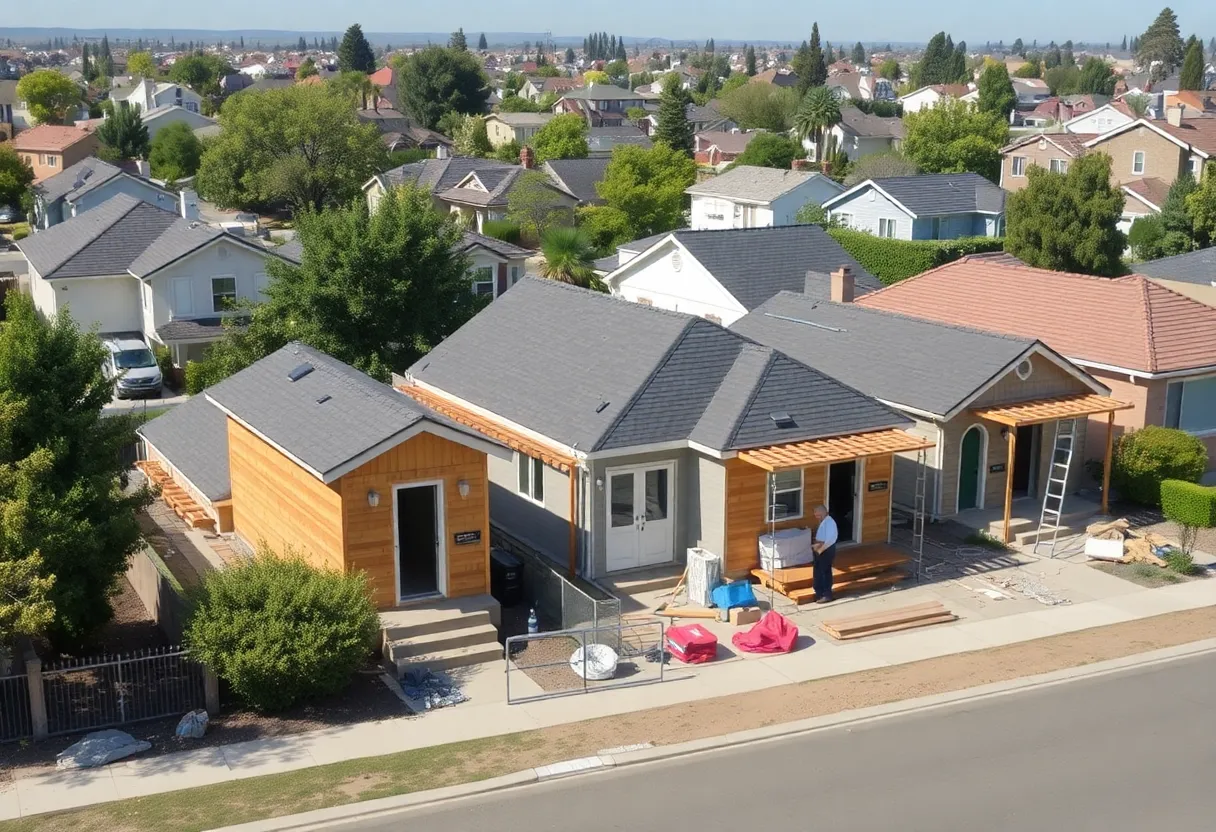News Summary
California is experiencing a severe housing shortage, with new housing stock increasing by only 0.84% in 2024. Accessory dwelling units (ADUs) have emerged as a popular solution, comprising about 20% of new housing. However, the high costs of construction are limiting accessibility for many families. Legislation has been introduced to ease restrictions and promote ADU production, yet questions remain about their effectiveness in addressing the housing crisis. Local occupancy preferences and funding challenges further complicate the situation, necessitating continued support for potential homeowners.
California is grappling with a critical housing shortage, as new housing stock in the state has increased by merely 0.84% in 2024, amounting to 125,000 new units. The challenge of providing affordable housing is further complicated by the rising costs of construction materials and labor. Accessory dwelling units (ADUs) have emerged as a potential solution, contributing approximately one-fifth of the newly added housing units this year.
The construction of ADUs is booming across California, with many homeowners taking the initiative to build additional units on their properties. These units are commonly viewed as valuable investments that can increase property values. However, the expense of constructing an ADU can range in the hundreds of thousands of dollars, raising questions about their accessibility for the average Californian.
While many owners of ADUs opt to leave their units for personal use or keep them vacant, the effectiveness of ADUs in alleviating the housing crisis may be undermined. For instance, in San Diego County, approximately 85% of permitted ADUs are occupied by renters, indicating that a substantial portion of these units is available for housing, yet only 15% are used by owners.
The uptick in ADU production has been notable, with a 14.3% increase in 2024 compared to the previous year, following a prior 10% rise in 2023. Consequently, cities such as Los Angeles have observed a growth of their housing stock by 6% from 2020 to 2025, positioning it as one of the leading cities for housing expansion within Los Angeles County. Growth rates vary significantly across the state, with Madera County reporting a 2.7% increase in housing stock in 2024, while smaller cities, such as Huron, saw growth nearing 8% during the same period.
Los Angeles County holds the distinction of permitting more ADUs per capita than any other county in California, highlighting a trend where lower- and middle-income cities exhibit a preference for approving ADU construction. Research suggests that the prevalence of ADUs is often associated with areas featuring lower income, higher density housing, and a younger demographic with a propensity for renting.
Despite legislative efforts aimed at increasing ADU production, the rising costs of construction pose a significant barrier, making it difficult for many families to view ADUs as a feasible solution to California’s housing crisis. Recent state laws have attempted to address these challenges by easing regulations surrounding ADU construction, including the reduction of parking requirements and the streamlining of approval processes.
Costs associated with constructing ADUs can vary widely across the state, with fees reaching upwards of $26,000, depending on factors like size and location. This financial burden reveals a need for more supportive measures to assist homeowners who wish to build these secondary units.
To further facilitate the growth of ADUs, a bipartisan federal bill known as the SUPPLY Act has been introduced. This legislation aims to offer financing options for homeowners looking to develop ADUs, potentially making it easier for modest-income families to engage in this type of construction. However, whether ADUs will effectively contribute to solving the housing shortage remains uncertain, as experts continue to question if these units genuinely house those lacking accommodation or if they are mainly serving existing residents with additional living space.
In summary, while the rise of ADUs in California presents a positive step towards addressing the housing crisis, various challenges—including high construction costs, local occupancy choices, and the need for continued supportive legislation—must be addressed to ensure they fulfill their potential in contributing to the state’s overall housing supply.
Deeper Dive: News & Info About This Topic
- Los Angeles Times: ADU Housing Shortage
- San Luis Obispo Tribune: Local ADU News
- SFGATE: Best ADU Builders in Bay Area
- Wall Street Journal: Financing Tiny Homes
- ABC10: ADU-Related Complaints Increase
- Wikipedia: Accessory Dwelling Unit
- Google Search: Accessory Dwelling Units
- Google Scholar: Accessory Dwelling Units
- Encyclopedia Britannica: Accessory Dwelling Units
- Google News: Accessory Dwelling Units

Author: STAFF HERE MISSION VIEJO WRITER
The MISSION VIEJO STAFF WRITER represents the experienced team at HEREMissionViejo.com, your go-to source for actionable local news and information in Mission Viejo, Orange County, and beyond. Specializing in "news you can use," we cover essential topics like product reviews for personal and business needs, local business directories, politics, real estate trends, neighborhood insights, and state news affecting the area—with deep expertise drawn from years of dedicated reporting and strong community input, including local press releases and business updates. We deliver top reporting on high-value events such as Oso Fit 5K Fun Run and Community Health Fair, Walk Against Drugs & Community Fair, and National Night Out. Our coverage extends to key organizations like the Mission Viejo Chamber of Commerce and Providence Mission Hospital Mission Viejo, plus leading businesses in retail and education that power the local economy such as The Shops at Mission Viejo, Capistrano Unified School District, and Amazon Delivery Station. As part of the broader HERE network, including HEREAnaheim.com, HEREBeverlyHills.com, HERECostaMesa.com, HERECoronado.com, HEREHollywood.com, HEREHuntingtonBeach.com, HERELongBeach.com, HERELosAngeles.com, HERESanDiego.com, and HERESantaAna.com, we provide comprehensive, credible insights into California's dynamic landscape.


